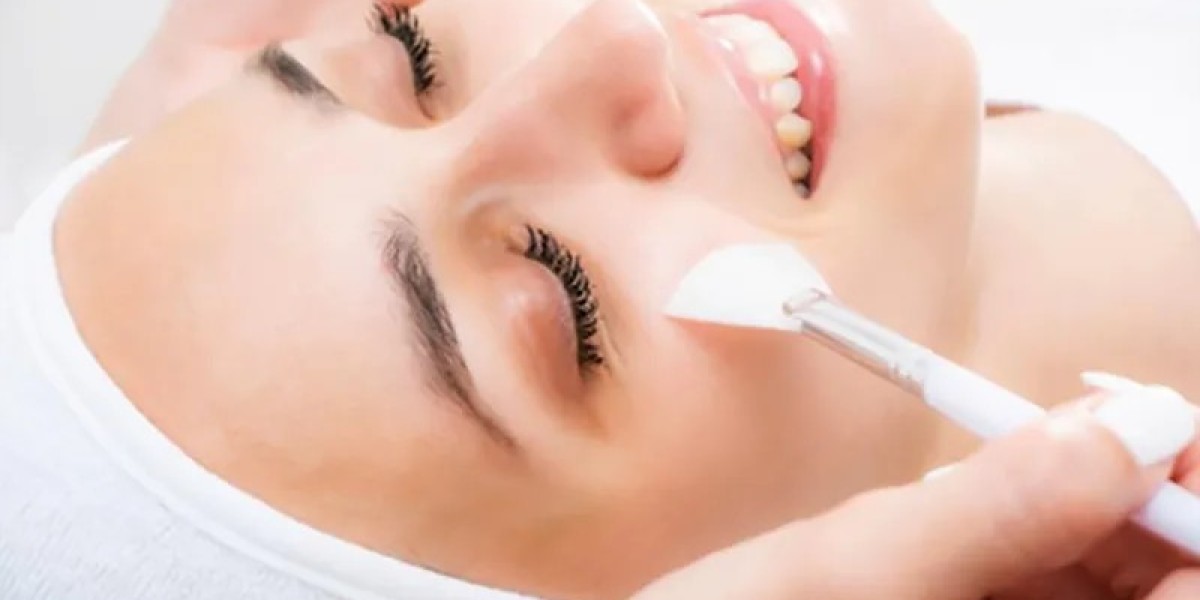Chemical peels have become a popular skincare treatment for those looking to rejuvenate their skin, reduce signs of aging, and tackle a variety of skin concerns. Whether you want to smooth wrinkles, fade acne scars, or brighten dull skin, understanding the different types of chemical peels can help you choose the right treatment for your unique needs. In this article, we’ll break down the various Chemical Peel Treatment Dubai types, what they’re used for, and how to decide which one is best for you.
What is a Chemical Peel?
A chemical peel is a cosmetic procedure in which a chemical solution is applied to the skin’s surface to exfoliate the outer layers. This process helps remove dead skin cells, stimulates new cell growth, and reveals smoother, more radiant skin underneath. Depending on the strength and depth of the peel, it can target issues like fine lines, uneven texture, hyperpigmentation, acne scars, and more.
Why Understanding Chemical Peel Types Matters
Not all chemical peels are created equal. They vary significantly in terms of strength, ingredients, recovery time, and results. Picking the wrong peel can lead to irritation, prolonged healing, or results that don’t meet your expectations. Learning about the key types of chemical peels allows you to make an informed decision and communicate effectively with your skincare professional.
The Three Main Types of Chemical Peels
Chemical peels are generally classified into three categories based on their depth of penetration and intensity:
1. Superficial Peels (Light Peels)
Purpose: These are the mildest peels, designed to gently exfoliate the outer layer of the skin (epidermis). They are ideal for anyone looking to brighten the complexion, improve minor discoloration, or maintain overall skin health.
Common Ingredients:
Alpha Hydroxy Acids (AHAs) such as glycolic acid, lactic acid
Beta Hydroxy Acids (BHAs) like salicylic acid
What to Expect:
Minimal downtime
Slight redness or peeling for 1-3 days
Multiple sessions may be needed for noticeable results
Best for:
Mild sun damage
Dull skin
Minor pigmentation issues
Early signs of aging
2. Medium Peels
Purpose: These penetrate deeper into the skin, targeting the epidermis and upper part of the dermis to correct moderate skin concerns.
Common Ingredients:
Trichloroacetic Acid (TCA) at concentrations between 20-35%
Glycolic acid at higher strengths
What to Expect:
Moderate peeling and redness lasting up to a week
Possible swelling and crusting
Best for:
Moderate wrinkles and fine lines
Uneven skin tone
Sun damage and age spots
Acne scars
3. Deep Peels
Purpose: The most intensive type, designed to penetrate deeply into the dermis and produce dramatic results. These peels provide significant correction for advanced skin concerns but require a longer recovery period and more careful post-treatment care.
Common Ingredients:
Phenol-based solutions
What to Expect:
Intense peeling, redness, and swelling that can last for up to 2 weeks or more
Healing time of several weeks, sometimes requiring time off work
Best for:
Deep wrinkles
Severe sun damage
Prominent scars
Significant pigmentation issues
Factors to Consider When Choosing a Chemical Peel
Finding the right chemical peel depends on several important factors:
Skin Type and Sensitivity
People with sensitive or darker skin tones may need gentler peels to avoid irritation or discoloration. Discuss your skin type carefully with a skincare professional before treatment.
Desired Results
Are you aiming for subtle brightening or a more dramatic anti-aging effect? Superficial peels are great for maintenance, while medium and deep peels are better for significant improvements.
Recovery Time
Consider how much downtime you can afford. Light peels often have little to no downtime, whereas deep peels require extended healing.
Existing Skin Conditions
If you have active Acne scar treatment Dubai, eczema, or rosacea, certain peels might not be safe or effective for you.
Tips for Preparing and Caring for Your Skin After a Chemical Peel
Proper preparation and aftercare are essential to maximize results and prevent complications:
Avoid sun exposure for at least 1-2 weeks before and after treatment. Use broad-spectrum sunscreen daily.
Follow your provider’s instructions on cleansing and moisturizing.
Avoid picking or peeling skin to prevent scarring.
Stay hydrated and maintain a gentle skincare routine.
Consider consulting a skincare professional about using products with antioxidants or growth factors to boost healing.
Conclusion
Understanding the types of chemical peels and their benefits is the first step toward healthier, more vibrant skin. Whether you’re seeking a gentle refresh with a superficial peel or a more transformative result with a medium or deep peel, there’s an option suited to your skin type, concerns, and lifestyle. Always consult with a skincare professional to tailor the treatment to your needs and ensure safety. With the right chemical peel, you can reveal smoother, brighter skin and feel confident in your natural glow.







